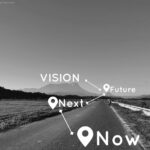Of the many components that make up the dynamic relationship of work, one is a willingness to be open and receptive to conversation, collaboration, and thoughtful diversity. Nestled at the foot of this communication mountain is the idea of fostering an inclusive space where employees feel safe to share their thoughts, opinions, and ideas without fear of reprisal, degradation, or shame. In the Diversity, Equity, and Inclusion (DEI) world, we call this psychological safety. It’s a time-consuming process to build trust and establish rapport with colleagues, and it’s critical for not only effective communication, but also facilitating change and sowing the seeds of inclusivity. Listening tours can be one element of establishing rapport and learning about critical issues within your workforce, departments, or sections. I conducted a listening tour that took an unexpected path, embarking on a journey of self-discovery leading towards inclusivity and propelled by listening, reflection, and recognition of [my] unconscious bias.
Listening tours are often used by new managers to ask questions, hear concerns, or provide space for employees to amplify their voice(s). A few weeks into my own listening tour, I paused to assess the sum of my interactions and realized I felt abraded.
My dissonance wasn’t connected to the topics. In one example an employee reflected on their struggle with student loan repayment when matched against their current salary. In another example the employee advocated for a salary increase to allow for the purchase of reliable transportation. Benign topics, right? Yet, I was still uneasy.
I continued reflecting on my interactions, reviewing my notes, and dissecting conversations, turning them over like a Rubik’s cube. I even skimmed back through my ancient psychology course books. Then, I stumbled across generational psychographics, a term coined by Emanuel Denby in 1964. Psychographics are the specific insights that set each generation apart from one another. They go beyond general demographics and begin to explore deeper concepts, like emotional responses, values, biases, prejudices, and beliefs.
It was interesting and enlightening information, but didn’t add up to why I was experiencing such a visceral reaction to the presentation of a colleague’s authentic concerns. So I dug deeper.
Who did I talk to? Where did they work? What was their background? What did we discuss? Then I found a puzzle piece. My feelings were isolated to generational psychographics relative to Generation Z (Gen Z). That felt important and worthy of further exploration.
Gen Zs were born between the years 1997 and 2012. They live in the age of social media: Snapchat and Instagram, specifically. They have little patience for things that don’t grab their attention right away. Gen Z also strongly believes in racial and gender equity, climate change, and economic opportunity. And, according to Insider Intelligence Online, they are considered the most “racially, ethnically, and sexually diverse generation in history”.
Here are a few more salient points about Gen Z’s, taken from Deloitte Global’s seminal Gen Z and Millennial survey:
- Gen Zs are worried about their salary and having sufficient funds to pay bills, coupled with global concerns about wealth inequality.
- They’re thinking about flexibility in work arrangements. Some 75% of Gen Zs expressed a desire for hybrid or remote work, mixed with the need to find value in the work and the organization.
- Mental health is a concern. Forty-six percent of surveyed Gen Zs expressed high rates of stress while 44% had left their organizations due to workload pressures.
- And finally, Gen Zs seek empowerment and voice, which translated to a sense of belonging or, conversely, led to workplace departures. Thirty-eight percent of Gen Zs said they’d leave an organization within the year if they felt neither empowered, nor heard.
Data from the Deloitte survey revealed the values that drive Gen Zs are pay equity (and inequity), finding a balance between work and life obligations, and feeling engaged in driving forward actionable social change.
This was all important interpretative information to understanding Gen Z, but I honed in on the words, “empowerment” and “voice.” Gen Zs are fearless in elevating their voice(s) to advocate for change. In fact, they demand it. It’s an admirable strength and takes great courage. And that’s when it hit me.
I was uncomfortable.
In one example a colleague outlined how an employer-provided benefit like the 403(b) tax-sheltered annuity was inconsequential to them–even with a sizable employer-match–and offered alternative benefits ideas. In another example the colleague leaned into an ask for a company-wide movement for individual salary transparency as another way to achieve pay equity and pay transparency.
In every example I reacted defensively to the topics and statements, even interrupting my own active listening process.
Why?
Because I’m not Gen Z.
I’m Gen X.
Generation X (Gen X) were born between 1965 and 1980. They are independent problem-solvers, self-sufficient, and resourceful. They value safety and security and are often grappling simultaneously with caring for children and aging parents. According to the Pew Research Center, Gen X is also America’s “neglected middle child”. Bookended by Baby Boomers in the front and Millenials behind, Gen-X often serves as a bridge between both groups but the same Pew Research indicates there is little that makes Gen X truly stand out. Stuck firmly in the middle, Gen Xs one claim to fame is a low tolerance for drama.
I considered the implications about having a “low tolerance for drama.” The Gen-Zs I spoke with were never unprofessional. They didn’t raise their voice, didn’t posture, or make highly unreasonable demands. Yet these particular interactions had sparked an emotional reaction. Was I interpreting their “demands” as dramatic? That got me thinking about cultural norms.
Cultural norms (also known as dimensions) are the unspoken social standards we live by. They govern appropriate–and inappropriate–behavior and are based on thoughts or shared beliefs within a specific culture or social group. One example of a cultural norm is work dimension and an element within work dimension is work/life balance. You can either “work to live,” or “live to work.” The responses vary based on generation and it might not be surprising to learn that Gen X lives to work, while Gen Z works to live. And that’s when it hit me.
Instead of listening to WHAT Gen Z said, I was distracted by HOW they said it. The combination of my representation as Gen X, combined with their direct delivery and approach rubbed against my ingrained communication methods. My communication norm is to use diplomacy to set the stage, carefully considering how the message receiver might feel or interpret my words. But in those moments, I felt like Gen Z’s approach didn’t consider the hard work that went into creating salary ranges or benefit packages. I interpreted their topics and direct approach as self-centered and dismissive of the organization’s good, hard work.
How does a message translate differently through the eyes and ears of multiple generations? As Gen X, I have nuanced viewpoints on communication etiquette. Gen X prefers to “caretake” the feelings of others, which Gen Z might perceive as double-speak or inauthentic. Gen X tends to consider the whole group, while Gen Z prefers an individual focus. We were in the same symphony, but sitting in different sections.
There’s another term for this: implicit bias. Implicit bias is the unconscious attitudes or stereotypes we have towards a people or group. The bias occurs unconsciously, automatically and unintentionally, but it always affects judgements, decisions, and behaviors. Failing to recognize my implicit bias might have prevented continuing work on fostering a culture of open communication with staff, with a domino effect on inclusion and belonging.
Perhaps others in public media are grappling with similar scenarios and it’s causing cross-generational dissonance. I’ve certainly seen an uptick in employee relations issues, most of which I now recognize were rooted in (cultural) misunderstandings.
Think back to when your cross-generational interactions went sideways. Were you actively listening? Or, were you preparing a rebuttal argument or response? Were you erecting communication walls à la Fortnight or were you covering, which is masking thoughts, feelings, and opinions.
I cover every day.
It’s a hallmark of Gen X, but it’s the antithesis of Gen Z.
What about microaggressions? Psychologist Derald Wing Sue defines microaggressions as, “brief everyday exchanges that send denigrating messages to certain individuals because of their group membership.” How often have you said, “s/he just doesn’t know any better.” Or, “s/he is just too young/new/junior to know the difference?” Both of these statements devalue an individual’s contributions based on ageist stereotypes. It’s impact, not intent.
Ultimately, I uncovered self-awareness and an admiration for the self-advocacy exhibited by my Gen Z colleagues. Gen Zs are courageous advocates and fearless in elevating their voices. They’re out to change the world in ways I could never have imagined.
I’m thankful for that journey of discovery, but I’m more appreciative of taking the time to consider what I was feeling. It was hard work, but I found ways to expand my knowledge and understanding of not only Gen Z, but also the broader cultural and generational dimensions that shape our views. I also saw how easily unconscious bias can blind, and bind, us.
Diverse talent enriches our stations in countless ways, but it’s not enough to just bring diversity through the door. We need shared insights and the ability to genuinely value each other because of – not in spite of – our differences. It’s also important to learn from one another through methods of listening and personal reflection. These are the practices that create spaces of inclusion and belonging.








